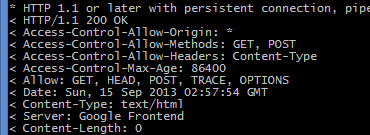A quick note about MIME types: JSON responses have a MIME type of application/json while Javascript files use application/javascript . JSONP is a JSON object within a Javascript function call, so it shares the same MIME type as Javascript ( application/javascript ).
With that said, there are some browsers (largely older browsers) and applications that don’t understand the application/json MIME type. They may require JSON responses to have a content type of application/javascript , application/x-javascript , or text/html . If you encounter issues with handling JSON, it’s a good idea to try changing the MIME type – it may solve the problem.
As a reminder, here’s how to set the content type of a response in Java (other languages have similar functions):
resp.setContentType(mime_type);
The resp object represents a javax.servlet.http.HttpServletResponse reference.
